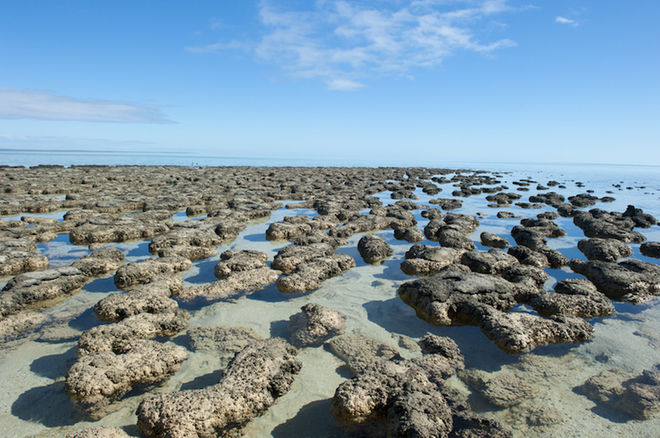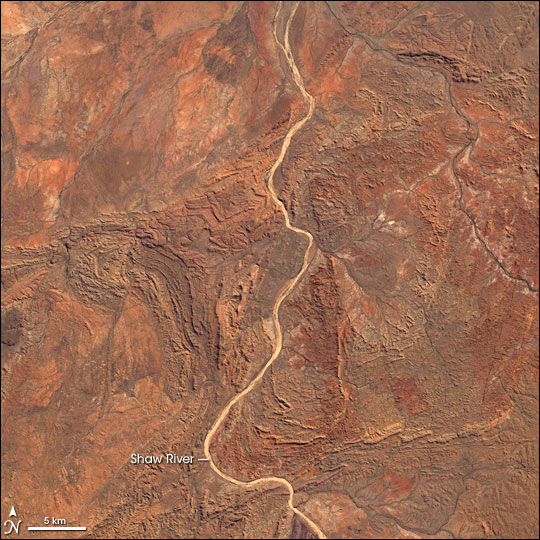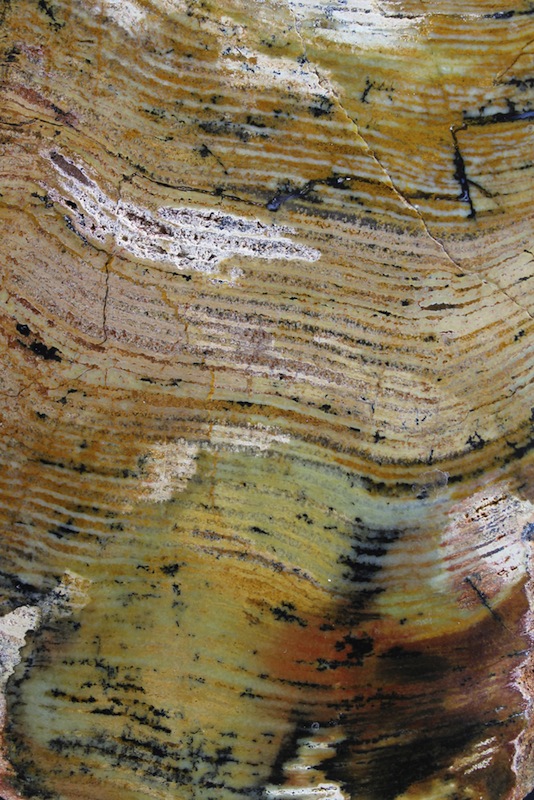Shark Bay, Australia

Some of the more distinctive ancient fossils are stromatolites, which are cone shaped rock-structures that pile up as the byproduct of cyanobacteria metabolism. In modern day, some of the most striking examples are found in the most westerly tip of Australia, called Shark Bay. Here, huge fields of stromatolites are lapped by the salty ocean waters and fed by bright sunlight.
Pilbara region

Scientists have found 3.43-billion-year-old fossil stromatlites in the Pilbara region of Australia. Here, a landsat image of the region.
Stromatolite layers

Here, layers from one of the Pilbara stromatolites.
Sign up for the Live Science daily newsletter now
Get the world’s most fascinating discoveries delivered straight to your inbox.

Tia is the managing editor and was previously a senior writer for Live Science. Her work has appeared in Scientific American, Wired.com and other outlets. She holds a master's degree in bioengineering from the University of Washington, a graduate certificate in science writing from UC Santa Cruz and a bachelor's degree in mechanical engineering from the University of Texas at Austin. Tia was part of a team at the Milwaukee Journal Sentinel that published the Empty Cradles series on preterm births, which won multiple awards, including the 2012 Casey Medal for Meritorious Journalism.










